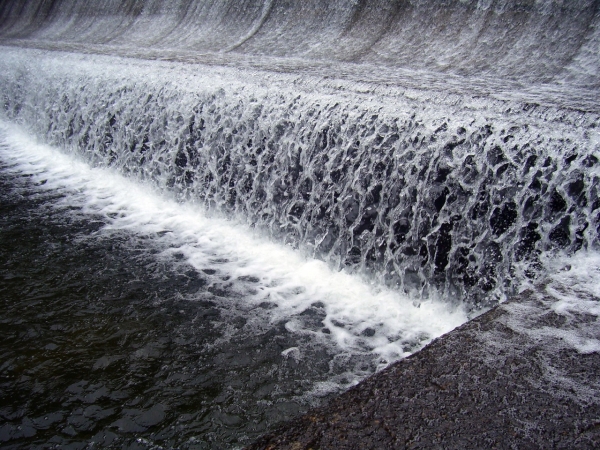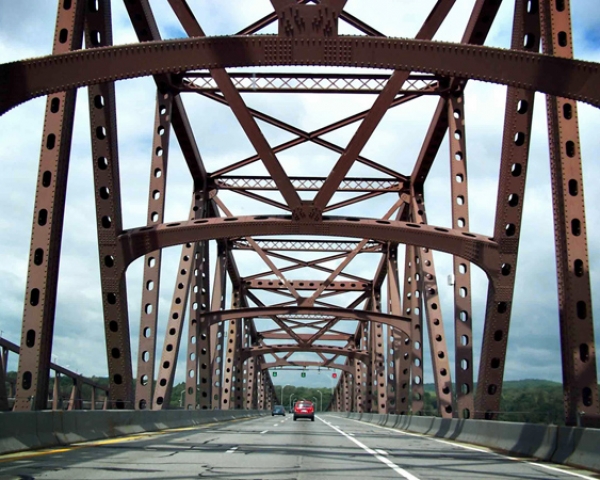It's About Dam Time!
This is the fourth article in the series on U.S. infrastructure, following our bridges article, “A Bridge to Everywhere." The American Society of Civil Engineers (ASCE) assigned the United States’ DAMS infrastructure a grade of “D” on their 2009 Report Card for America’s Infrastructure.
As discussed in the prior infrastructure article, the average age of a bridge in the United States is now 44 years. The average dam is an older sibling to the typical bridge, at 52 years old. Dams and bridges in the United States share many things in common. Being generous and assuming an average life span in parallel with human years, both these national systems are in the midst of a mid-life crisis.

U.S. Infrastructure Series
U.S. Infrastructure - Obvious But Unnoticed
Three Square Miles Of Concrete
A Bridge To Everywhere
We Might Have A Drinking Problem
Just as there is a national bridge inventory compiled by the Federal Highway Administration (FHWA), there’s also a National Inventory of Dams (NID) maintained by the U.S. Army Corps of Engineers (USACE). There are approximately 80,000 dam structures in the United States. As was true in our prior infrastructure topics of aviation and bridges, safety concerns and dramatic system failures have driven regulation and investment. This is a consistent American, if not world-wide, political dynamic, which has also proven to be true in the case of our dam infrastructure’s history as well.
Very much like bridges, dams are routinely inspected for structural deficiencies. Unlike bridges, dams are also categorized by hazard ratings reflective of the extent of damage their failures would cause. High hazard dams, significant hazard dams, and low hazard dams represent likely loss of human life, significant capital property damage, or only loss of the dam structure, respectively, should a dam failure occur. Structural deficiencies are recorded when existing site or material conditions that could contribute to a failure are identified during inspections. Structural deficiencies are determined independent of the dam hazard ratings. Funding decisions for dam improvements and maintenance need to be carefully considered based on both of these dam assessment criteria, particularly in an environment of scarce resources.
The ASCE Report Card describes the current state of funding for our dam infrastructure. It estimates $12.5 billion is required every five years. With only $5.05 billion now being spent, a short-fall of $7.45 billion remains. It also indicates that in 2007, there were 4,095 "deficient" dams in the U.S., with 1,826 of these being in the "high hazard" category.
Common dam construction techniques include gravity dams, concrete arch dams, buttress dams, and embankment dams. Gravity dams, typically constructed of concrete or masonry, rely on the massive weight of their construction materials to offset the lateral forces imposed by the reservoir contained behind the dam. Concrete arch dams support the hydraulic forces exerted by their reservoirs by transferring these loads through the dam wall to earth abutments at either end of the structure. This design concept is very similar to the use of a structural arch in building construction, resulting in high load carrying ability with less construction material. Concrete arch dams are perfect for steep, narrow river valleys with solid rock foundations. Buttress dams are similar to gravity dams, but feature short support walls perpendicular to the dam face, which provide additional lateral support. This reduces the volume of construction materials required in the main dam wall. Embankment dams made of earth and/or rock are overwhelmingly the most common type of dam built. Embankment dams are built with a central core wall structure that is contained on either side by a significant volume of gradually sloped earth or rock fill. Some dam projects rely on a combination of these basic construction methods to achieve an effective design approach.
There are several dam failure modes, with the most prevalent being overtopping, material failure of a dam's structural components or foundation, and catastrophic erosion caused by unfiltered seepage around or within the dam structure.
Although certain varieties of concrete and masonry dams are designed to be overtopped by excess flows, most are not. In the case of earth embankment dams, overtopping causes rapid erosion of the soil structure, collapsing the dam wall. Concrete dams not designed for overtopping are also vulnerable, because overtopping flows can quickly erode the earth embankments abutting dam side walls. Most dams are designed with spillway systems that are used to safely regulate downstream flow from the reservoir so overtopping does not occur.
Due to design or construction flaws, there could be an outright product failure of the concrete, masonry, or other primary construction material used in the dam wall. Lack of adequate routine maintenance can also contribute to these material failures. Foundation soils that were not engineered properly to carry the full extent of actual loads present are another category of material failure. Similar to retaining walls, dams have failed by sliding and overturning due to poor foundation design.
Unfiltered seepage may be the most insidious threat to an otherwise healthy appearing dam. When fine soil particles are washed out of the soil matrix underneath a dam's base, localized voids are created and they channel water, creating ever-larger flow pathways through the soil. Eventually, significant erosion occurs and portions of the soil foundation can be so compromised by water flow that they fail completely, collapsing sections of the dam wall above. "Piping" is a form of seepage erosion that can occur within the interior of earth embankment dams, and it is equally serious.
Most dams in the United States are privately owned but regulated by state and local governments. It’s logical there would be a state-centric dam safety organization, and there is: The Association of State Dam Safety Officials (ASDSO). One of their goals is public outreach and education. ASDSO has an on-line program titled “Dam Safety 101”. This online education site is very informative and provides a description of the common deficiencies in our dam structures today, construction methods, funding shortfalls, and political issues that we've briefly discussed. The ASDSO website is a great resource for those more interested in this category of U.S. infrastructure. It includes a list of major dam failures in the U.S., going all the way back to the famous Johnstown, PA, flooding incident of 1889 which many of us learned about in grade school. The number of annual dam failures in the United States is more significant than one might first assume.
When most folks think of dams, they probably think of the notable giant structures that are a part of American culture as well as linchpins of our national infrastructure. A good awe-inspiring example is the Hoover Dam that contains Lake Mead near Las Vegas, NV. Hoover Dam is a great representative of American dam infrastructure, not only because it is very photogenic; it also offers good examples of all the major reasons dams are typically built. It provides hydro-electric power, recreational facilities, and perhaps most importantly, it regulates the flow of the Colorado River by creating a vast reservoir in the form of Lake Mead. Lake Mead provides a dependable, year-round water supply for human consumption and irrigation through the southwestern United States. The top of Hoover Dam’s concrete arch construction also serves as a “bridge” between Nevada and Arizona. Hoover Dam's return on investment since the 1930’s makes it one of the best construction projects we’ve completed as a nation.
Join us next time on Buildipedia.com for the fifth article in our U.S. Infrastructure series, “We Might Have a Drinking Problem” when we investigate the Drinking Water category from ASCE's Report Card for America's Infrastructure.

Andrew Kimos
Andrew Kimos completed the civil engineering programs at the U.S. Coast Guard Academy (B.S. 1987) and the University of Illinois (M.S. 1992) and is a registered Professional Engineer in the state of Wisconsin. He served as a design engineer, construction project manager, facilities engineer, and executive leader in the Coast Guard for over 20 years. He worked as a regional airline pilot in the western U.S. before joining the Buildipedia.com team as Operations Channel Producer.
Website: buildipedia.com/channels/operations




